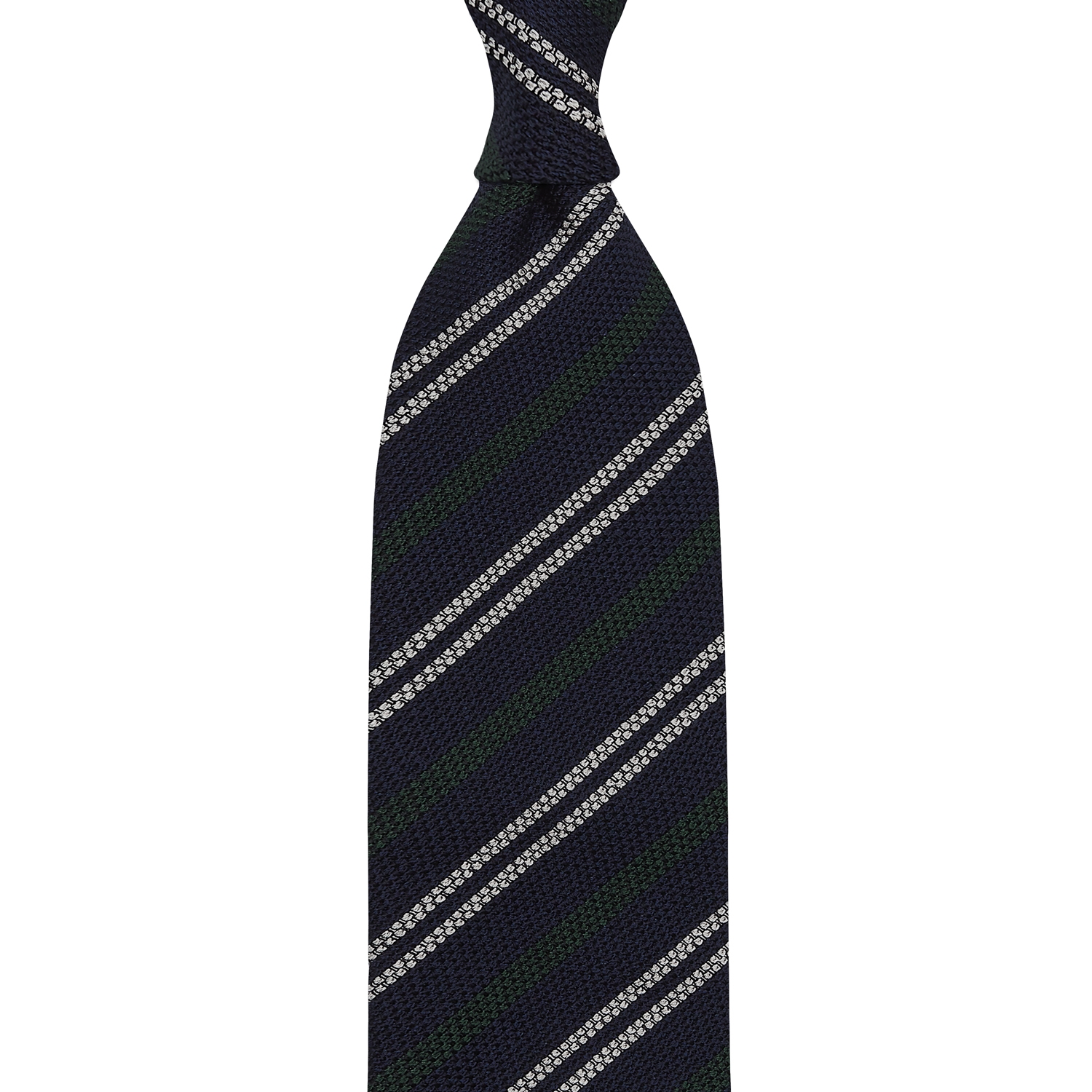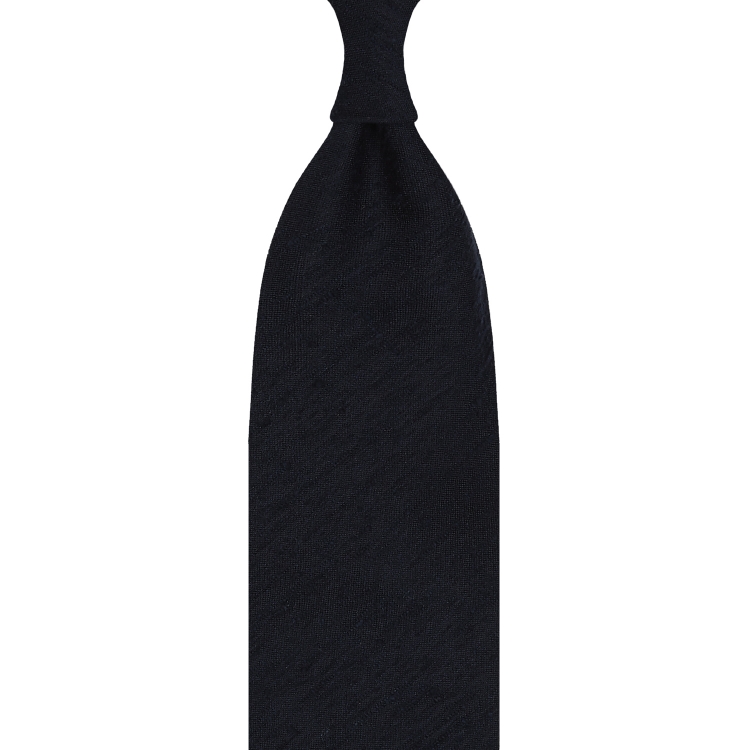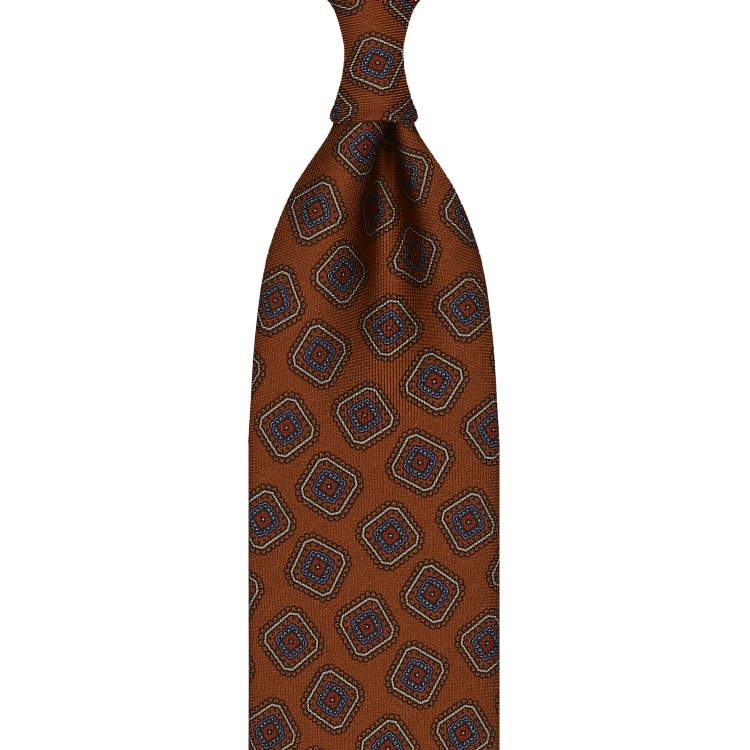Untipped 3-folded silk shantung tie with hand-rolled edges
SILK / SHANTUNG
Silk Shantung is a special kind of medium-weight fabric used in tie production. The shantung is distinguished by its unusual asymmetrical, slubby texture. Its name is derived from the Chinese province of Shandong, where the fabric is produced. The distinctive attribute of a Shantung fabric is that it features a somewhat smooth down side and a slubbed top side, with a handle not different to linen fabrics. Shantung ties are usually woven plain or with a regimental stripe. Shantung silk ties go well both with a suiting or casual tailoring. Add a touch of interest with linen, lightweight flannel & all season fabrics, usually ideal for summer layering.
Untipped
The beauty of an untipped tie is that it is very organic, simple and lightweight. You can see through the inner layer of the tie. At Suitsurmesur, we offer untipped ties with hand rolled edges, which means the tip is thinner because it is made with the outer shell fabric without the extra layer of interlining. More time, extraordinary skill and craft are involved in the construction of an untipped tie conversely to a tipped variant. An untipped tie is more airy and lighter especially when paired with an unconstructed jacket. It is a great choice for spring summer seasons as it produces a light drape that is quintessential for a downplayed elegant look. A subdued look that adds subtle personality to an outfit.
Fold Construction
Classic ties are made with a 3-fold construction simply because the tie is folded three times over. Simply put, one fold on the inside, a second fold over and a third over again so that you get a closed seam on the edge. Alternatively, other fold construction types such as six, seven have become popular with tie enthusiasts and are used as a quality hallmark. However, what really matters is not the number of folds but the look, feel and quality of the materials used in the process of construction.





































